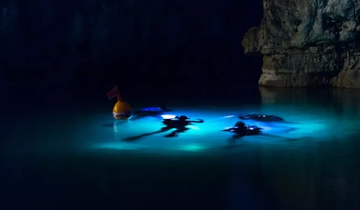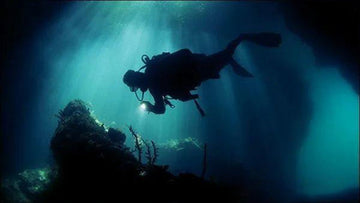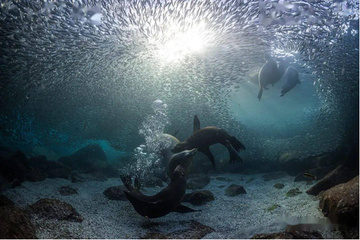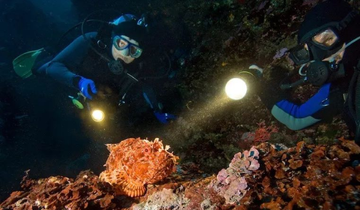Introduction
When choosing a dive light, one of the most important yet often overlooked factors is the beam angle. Whether you’re exploring a wreck, filming underwater scenes, or doing a night dive, the difference between a flood light and a spot light can completely change your underwater experience.
This guide will help you understand the dive light beam angle, compare flood vs spot lights, and show you how to choose the best one for your specific diving style.
1. What Does Beam Angle Mean?
The beam angle describes how wide the light spreads underwater.
-
Narrow beam (8°–20°) → Concentrated light with a powerful central spot.
-
Medium beam (30°–60°) → Balanced coverage for general diving use.
-
Wide beam (90°–120°) → Broad, even illumination for photography and videography.
Underwater, light behaves differently than on land. The wider the beam, the more the light gets scattered and absorbed by particles in the water. That’s why beam angle matters so much for clarity and visibility.
2. Flood Light vs Spot Light: Key Differences
| Feature | Flood Light | Spot Light |
|---|---|---|
| Beam Angle | 90°–120° | 6°–20° |
| Light Type | Soft, even illumination | Focused, intense center beam |
| Best For | Photography, videography, close-up work | Signaling, exploration, search dives |
| Light Effect | Natural-looking wide coverage | Strong penetration through murky water |
| Drawback | Less effective in low-visibility conditions | Too harsh for wide-area lighting |
📸 Flood Lights
Flood lights are designed for underwater video and photography. Their wide beam evenly lights up subjects, reduces harsh shadows, and brings out the true colors of the scene — essential for capturing clear footage.
🔦 Spot Lights
Spot lights are ideal for technical dives, wreck exploration, or night dives where long-distance visibility is needed. Their concentrated beam penetrates far, helping divers see through turbid water or communicate with light signals.
3. Real-World Examples
🐠 Underwater Photography or Videography
If you’re shooting wide-angle reef scenes or models underwater, use a pair of flood lights (100°–120°). This ensures smooth lighting across the frame and avoids “hot spots” in the center.
⚓ Wreck or Cave Diving
For exploring structures or tight spaces, a spot light with 8°–12° is perfect. It helps you look further ahead, highlight details, and minimize backscatter from particles.
🌙 Night Diving
Combine both — one spot light as your main torch and one flood light as a fill light. This dual setup gives balance between distance and ambient light, enhancing safety and orientation.
4. How to Choose the Right Beam for You
When deciding between a flood vs spot dive light, ask yourself:
-
Do I record videos or mainly explore?
-
How clear is the water where I usually dive?
-
Do I dive in groups or solo (for signaling use)?
Recommended setup:
-
Recreational divers → Flood 90°–100°
-
Night / wreck divers → Spot 8°–12°
-
Underwater videographers → Dual flood (120° each side)
-
Macro photographers → Focus spot or snoot light
5. Final Thoughts
There’s no “best” beam angle for everyone — it depends entirely on your purpose.
A flood light offers beauty and balance, while a spot light gives power and precision. The perfect dive lighting setup often comes from combining both, allowing you to adapt to any underwater condition.
Whether you’re exploring coral reefs or capturing cinematic underwater footage, understanding dive light beam angles will help you make every dive brighter, clearer, and more controlled.




